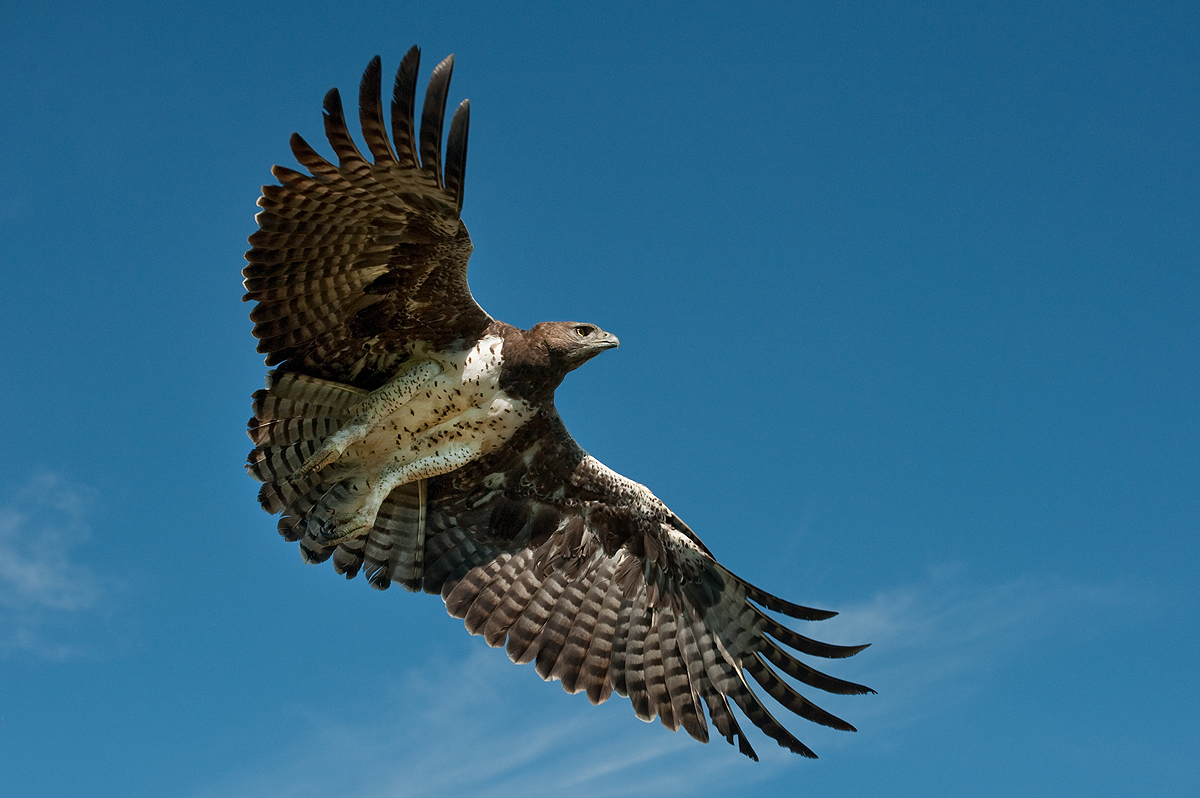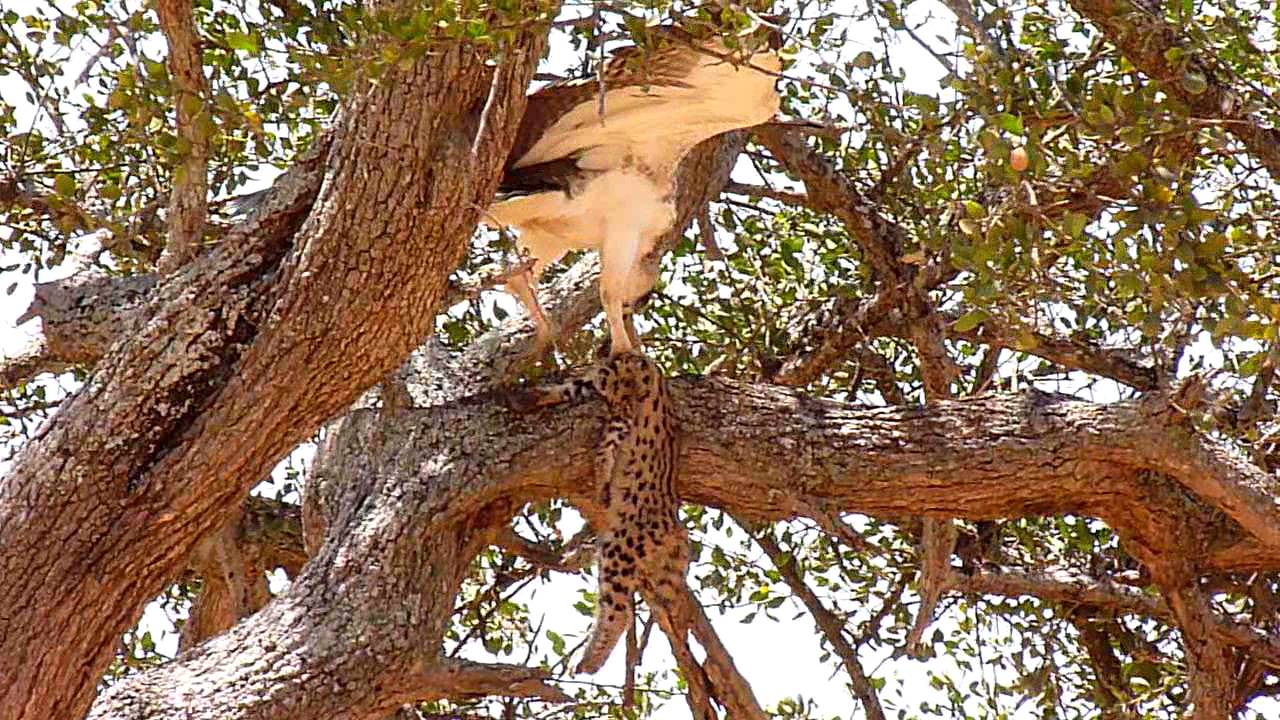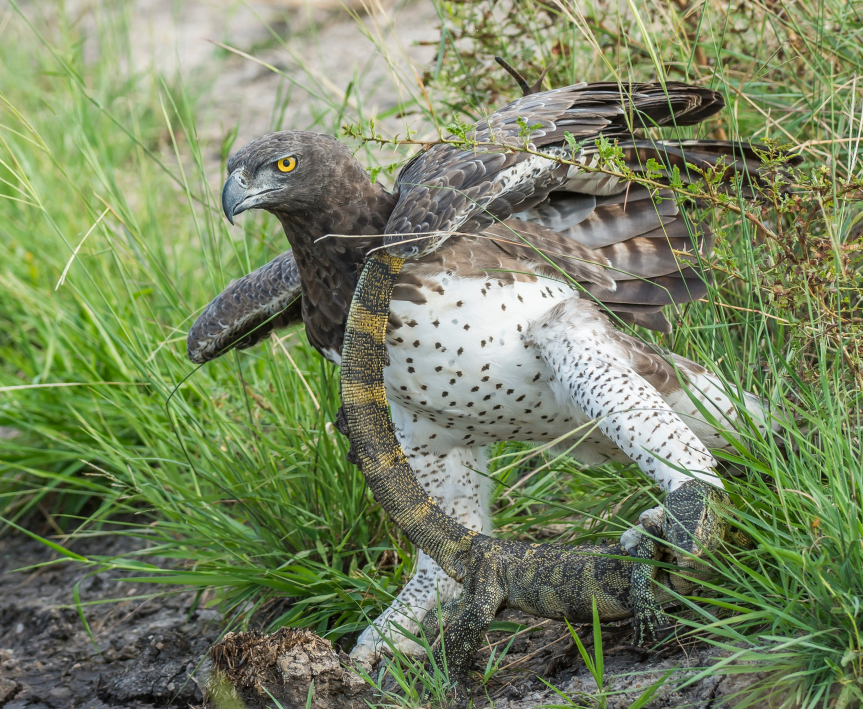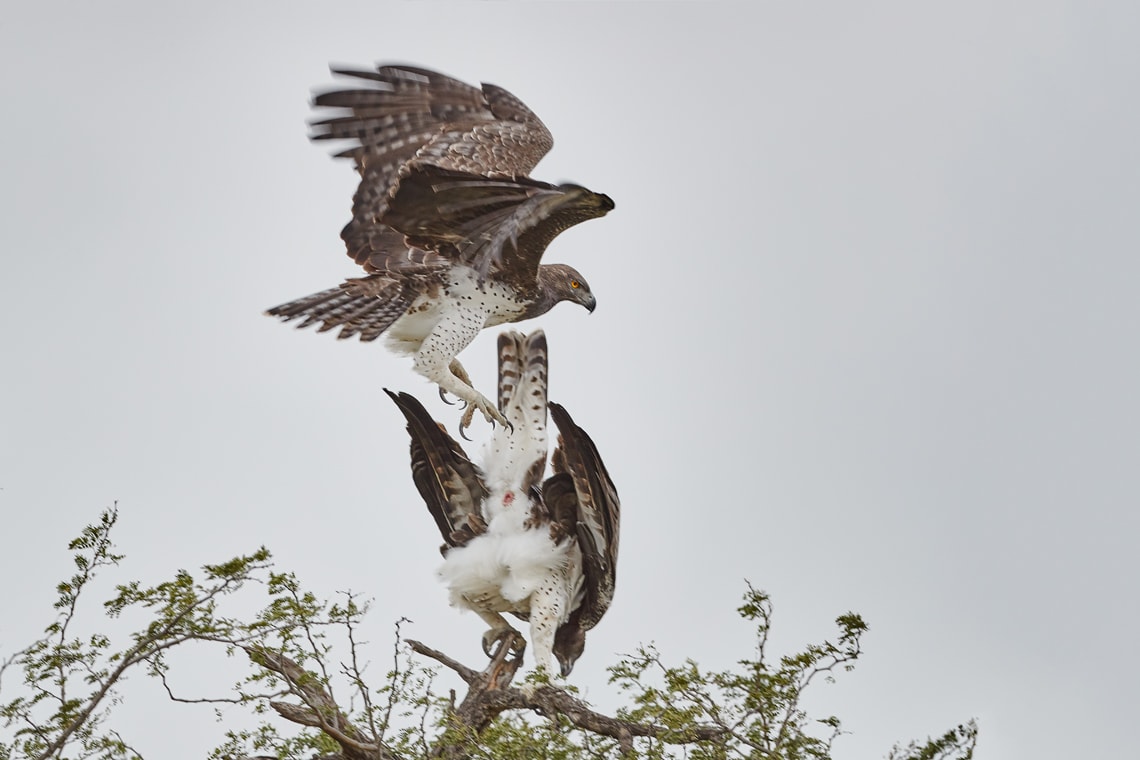Crowned as the largest eagle in Africa and the fifth heaviest eagle (on average) in the world, the martial eagle has a wingspan of up to 2.6 metres, and it can lift prey weighing up to 8kg (although typically they lift only 1-4 kg). The martial eagle even occasionally preys upon the adult kori bustard, which may well be the heaviest flying animal alive today.

Martial eagles have extremely keen eyesight (3.0-3.6 times human acuity) and can spot potential prey up to five kilometres away!
The martial eagle can be found in most of Sub-Saharan Africa, wherever food is abundant and the environment favourable. Greater population densities exist in Southern Africa, especially in Zimbabwe and South Africa. Generally, these birds are more abundant in protected areas, such as the Kruger National Park and the Kgalagadi Transfrontier Park in South Africa, or Etosha National Park in Namibia.

The diet of the martial eagle varies greatly depending on prey availability, and it can be dictated largely by opportunity. One study of the eagles in Kruger National Park found that 45% of their diet was made up of birds, particularly game birds and Egyptian geese.

The estimated population of the martial eagle is about 30,000 individuals, although this is difficult to ascertain given the eagle’s shy nature and avoidance of humans. Listed as Near Threatened due to a major decline in their numbers over the last few years, this eagle’s greatest threat comes from habitat loss and humans, as is the case with most apex birds of prey.
Viewed by farmers as a threat to livestock, the martial eagle is often poisoned and shot. However, most of this persecution is unfounded, as domestic animals make up a very small part of the eagle’s diet. Other threats come from powerline collisions and habitat destruction. The eagle’s low reproductive rate is also a problem for its long-term survival.

The future success of the martial eagle will depend greatly on educating African farmers to understand that this raptor is an integral part of a healthy environment. An increase in protected areas, so that the martial eagle can hunt and nest, will also greatly increase their chances of long-term survival.
According to africageographic











